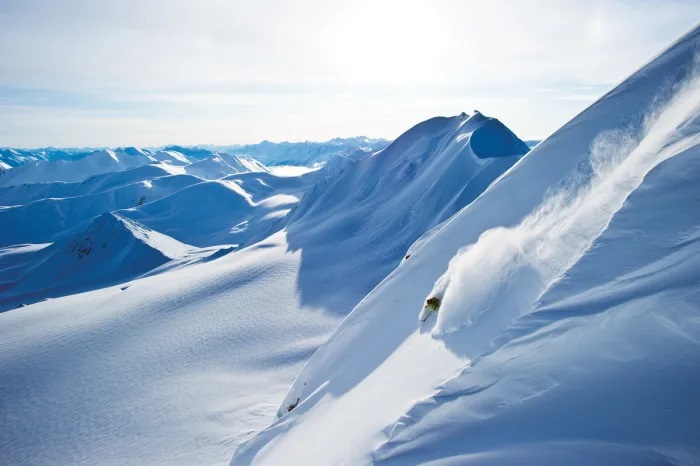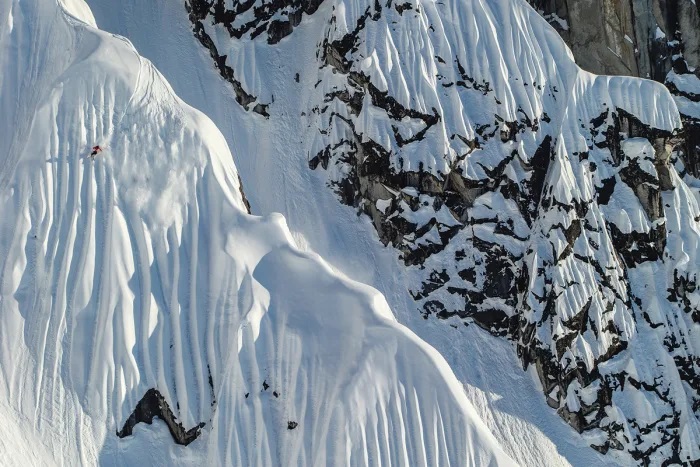
(Ski Mag) A seasoned guide’s tips on how to ski Alaskan terrain—and how not to be the guy they’re talking about at the guide meeting.
Try a shorter pole, suggests Doug Workman. It’s a trick he learned from Doug and Emily Coombs, founders of Valdez Heli-Ski Guides, where he’s been guiding since 2004. “It encourages you to lean forward. Dropping down five centimeters can make a big difference.”

Another simple tip: Get in shape. Spend the winter skiing long runs on tough terrain. Alaska’s no place to show up with rubber legs and rusty technique. In fact, the techniques you’ll use in the vast spaces of Alaska are the same you employ skiing lift-served powder. And Workman emphasizes that despite Alaska’s scary reputation, a solid skier with a capable guide can handle it. “Everyone thinks you need to be an extreme skier, but the Chugach has vast terrain with something for almost all abilities. There are tremendous areas for advanced-intermediate skiers.”
But (and you knew there was a “but” coming; this is Alaska, after all) the real key to skiing big Alaskan lines is convincing your guide you can handle them. And that, Workman says, is more about attitude than ability.
“What matters most is that you ski in control. It has a lot less to do with aptitude than with self-awareness and a willingness to ski within your limits. We can take an advanced intermediate who demonstrates he’s willing to ski in control down very big terrain, whereas a strong-willed 22-year-old male who wants to always ski at the edge of his ability—that kind of skier will get reined in quickly; the guide will have to limit where he can go.”
Workman’s clients learn to ski the way a guide skis: deliberately, well within ability, breaking Alaska’s huge vert into manageable sections, planning each descent in advance, sticking to that plan, stopping often to reassess and “check back in with your surroundings.”
“Even as you get better—and it’s the same for a client or a guide—the goal is not to be Sage [Cattabriga-Alosa, ski-film star]. That’s not what we want from clients; it’s not how we ski ourselves. Learn to ski more like a ski mountaineer, where the goal is to safely ski long descents.”

Finally, the fun part: slough management. Alaska’s deep powder and steep terrain add up to constantly moving snow—mini avalanches that can knock you off your feet if you don’t have a plan.
“People often don’t have experience with it, and we spend time on that. There are three ways to deal with slough, and only two ways we recommend. What we don’t recommend is trying to ski faster than your slough. People see that in movies and think they can do it, but that’s rarely what happens.”
A better approach is to ski out to the side of your slough, or check speed and stay behind it.
“We’ll teach you to make a few turns to test the slough and see how fast it is and how voluminous, check out its speed and size and direction. If it’s slow, sometimes you can ski ahead of it. But once you determine the speed, volume, and trajectory of your slough, then you can ski off that trajectory and get clear of it. That’s why spines are fun: You can ski something steeper because the snow is always falling away on either side of the spine.”
Full article on www.skimag.com
